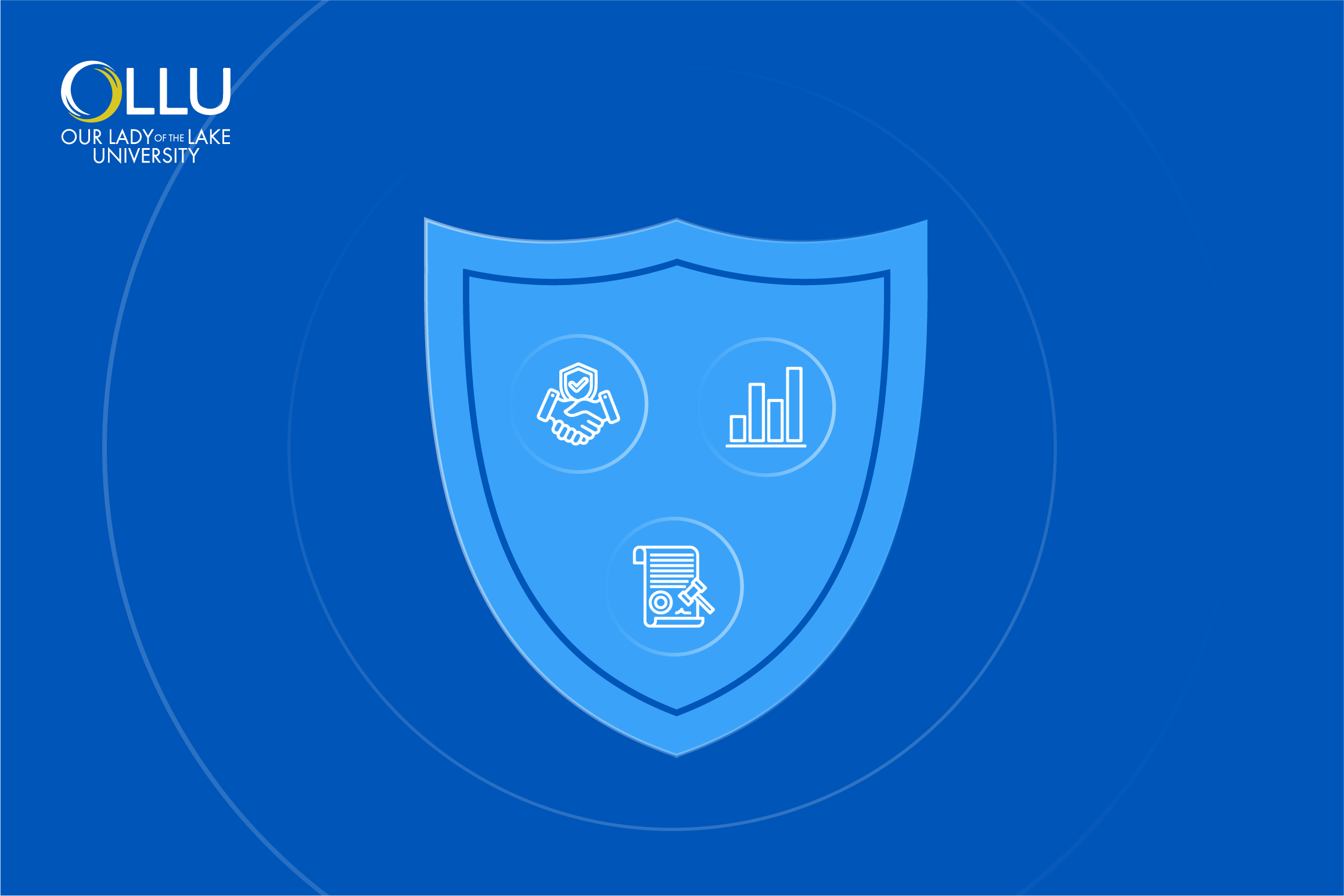What Is Risk Management in Cyber Security: An In-Depth Guide
May 26, 2024

Cybersecurity has become a top priority for organizations across industries in today's increasingly digitized world. As businesses rely increasingly on technology to drive operations and store sensitive data, the risk of cyber threats and attacks escalates. In response to this growing threat landscape, cybersecurity risk management has emerged as a critical strategy for protecting organizations from cyber risks.
This comprehensive guide will thoroughly explore the intricacies of cybersecurity risk management, offering insights into its fundamental principles, processes, and best practices. Through a comprehensive exploration of risk management in cybersecurity, readers will gain a deeper understanding of its significance in safeguarding organizations against cyber threats in the modern digital era.
What Is Cybersecurity Risk Management?
Cybersecurity risk management involves a structured approach to recognizing, evaluating, and addressing potential threats to an organization's information assets. Organizations can effectively safeguard their digital infrastructure, data, and operations from malicious actors by analyzing potential threats and vulnerabilities.
This proactive approach enables businesses to anticipate and counteract cyber threats before they manifest into damaging incidents. By implementing robust cybersecurity risk management practices, organizations can minimize the likelihood and impact of cyberattacks, ensuring their sensitive information and systems' confidentiality, integrity, and availability.
Cybersecurity risk management functions as a crucial barrier against the ever-changing array of cyber dangers, enabling organizations to maneuver through the complexities of the digital domain with resilience and confidence.
Why is risk management important in cyber security?
Risk management plays a pivotal role in cybersecurity by enabling organizations to effectively identify and prioritize potential cyber risks. In today's digital landscape, where cyber threats constantly evolve and multiply, understanding and managing these risks is vital to maintaining the security and resilience of information assets.
By systematically assessing and categorizing risks, organizations can efficiently allocate resources in order to address the most significant threats first, mitigating potential damage and minimizing disruptions to operations. Furthermore, risk management ensures the confidentiality, integrity, and availability of information assets, safeguarding sensitive data from unauthorized access, tampering, or loss.
Ultimately, by integrating robust risk management practices into their cybersecurity strategy, organizations can confidently navigate the complexities of the digital world and fortify their defenses against emerging threats.
Cybersecurity Risk Management Process
In cybersecurity, managing risks is a structured process crucial for protecting organizations against potential threats. This process typically involves four key steps: risk identification, risk assessment, mitigation, and monitoring. The following paragraphs will explore each of these steps in detail, highlighting their significance in fortifying an organization's cybersecurity posture.
Risk identification
A foundational step in the cybersecurity risk management process, risk identification involves a systematic identification of potential cyber risks that could threaten an organization's information assets. This process entails identifying various elements, including:
- Threats: Potential events or circumstances that can cause harm to the organization's assets;
- Vulnerabilities: Weaknesses or flaws in the organization's systems that could be exploited by threats;
- Potential impact: The consequences that could result from the exploitation of vulnerabilities by threats.
Through comprehensive risk identification, organizations can gain a clear understanding of the cyber risks they face, allowing them to prioritize and address these risks effectively in subsequent stages of the risk management process.
Risk assessment
Risk assessment is a critical phase in cybersecurity risk management, focusing on evaluating the likelihood and impact of identified risks to an organization's information assets. During this process, organizations analyze the probability of each identified risk materializing and the potential severity of its impact if it were to occur.
Organizations can systematically gauge the likelihood of threats exploiting vulnerabilities and the possible consequences of such incidents by employing various methodologies, such as qualitative and quantitative risk assessment techniques. This evaluation provides valuable insights into the relative significance of different risks, enabling organizations to prioritize their efforts in mitigating risk according to the level of threat it poses to their operations, data, and systems.
Through thorough risk assessment, organizations can make informed decisions about allocating resources and implementing controls to effectively manage and mitigate cyber risks.
Risk mitigation
Risk mitigation encompasses a range of strategies to reduce the impact or likelihood of identified cyber risks on an organization's information assets. Among these approaches are strategies such as:
- Risk avoidance: Organizations take actions to eradicate or lessen their exposure to specific risks;
- Risk transfer: Shifting risk to third parties through insurance or contracts;
- Risk mitigation: Controls and safeguards are established to decrease the probability or severity of recognized risks;
- Risk acceptance: Organizations recognize certain risks as inevitable or manageable and opt to tolerate them without additional intervention.
By employing these strategies tailored to their specific risk profile and organizational objectives, businesses can effectively improve their resilience to cyber threats and safeguard their critical assets.
Risk monitoring
Risk monitoring is a vital component of cybersecurity risk management, emphasizing the continuous observation and evaluation of the organization's digital environment to identify emerging risks and evaluate the efficacy of existing risk mitigation strategies. By maintaining ongoing vigilance, organizations can stay abreast of emerging cyber threats, evolving vulnerabilities, and changes in their operational landscape that may impact their risk profile.
Regular monitoring allows timely detection of potential risks, enabling proactive interventions to prevent or mitigate their impact before they escalate into significant incidents. Furthermore, monitoring facilitates the evaluation of the effectiveness of implemented risk mitigation measures, providing valuable feedback for refining strategies and adapting to evolving cyber threats.
Through diligent risk monitoring, organizations can maintain a robust cybersecurity posture and effectively safeguard their information assets in an ever-changing threat landscape.
Cybersecurity Risk Management Standards and Frameworks
Cybersecurity risk management standards and frameworks, such as the NIST Cybersecurity Framework, ISO/IEC 27001, and CIS Controls, serve as invaluable guidelines for organizations seeking to implement effective cybersecurity risk management practices. These standards offer comprehensive frameworks that outline best practices, processes, and controls for identifying, assessing, and mitigating cyber risks.
For instance, the NIST Cybersecurity Framework provides a flexible and risk-based approach that organizations can customize to their specific needs, helping them align cybersecurity activities with business objectives and prioritize resource allocation effectively.
Similarly, ISO/IEC 27001 offers a systematic approach to managing information security risks, emphasizing the establishment of an Information Security Management System (ISMS) that enables organizations to ensure the CIA (confidentiality, integrity, and availability) of all information assets.
Additionally, CIS Controls offer a prioritized set of actions that organizations can implement to improve their cybersecurity posture, focusing on fundamental security principles.
By adhering to these standards and frameworks, organizations can establish a solid foundation for cybersecurity risk management, enhance resilience against cyber threats, and demonstrate commitment to protecting their assets and stakeholders.
What Are the Benefits of Cybersecurity Risk Management?

Cybersecurity risk management offers many benefits to organizations, ranging from bolstering their security posture to ensuring regulatory compliance and safeguarding their reputation.
By implementing robust risk management practices, organizations can proactively identify and mitigate potential cyber threats, thereby decreasing the likelihood of security breaches and mitigating associated financial losses, including those stemming from data breaches, system downtime, and legal liabilities.
Moreover, effective risk management enables organizations to align their cybersecurity efforts with regulatory requirements and industry standards, guaranteeing adherence to relevant laws and regulations, such as GDPR, HIPAA, and PCI DSS.
Beyond regulatory compliance and financial considerations, cybersecurity risk management is crucial in safeguarding an organization's reputation and maintaining stakeholder trust. Organizations can enhance their credibility and mitigate the negative impacts of security incidents on their brand reputation by demonstrating a commitment to protecting their information assets and sensitive data.
Ultimately, the benefits of cybersecurity risk management extend far beyond mitigating financial losses; they encompass fostering a culture of security, promoting resilience, and ensuring the organization's long-term success and viability.
Best Practices for Implementing Risk Management in Cyber Security
Implementing effective risk management practices in cybersecurity requires a proactive and comprehensive approach. Organizations can improve their risk management by adopting several best practices.
First and foremost, implementing a risk management framework, such as the NIST Cybersecurity Framework or ISO/IEC 27001, provides a structured approach to identifying, assessing, and mitigating cyber risks. Regular risk assessments are essential to evaluate the evolving threat landscape and prioritize mitigation efforts accordingly. Implementing various robust security controls, such as firewalls, encryption, and access controls, helps mitigate identified risks effectively.
Cybersecurity training and awareness programs serve to educate employees about potential risks and their role in maintaining security, reducing the likelihood of human error. Establishing an incident response plan ensures a fast and coordinated response to security incidents, thus minimizing their impact.
Finally, continuous monitoring and improvement of risk management processes allow organizations to adapt to emerging threats and evolving business needs effectively. Successful examples of risk management strategies include organizations that have seamlessly integrated risk management into their culture and operations, consistently staying ahead of emerging threats and effectively mitigating risks to their information assets.
Conclusion
In conclusion, cybersecurity risk management is paramount for safeguarding organizations from cyber threats. Implementing effective risk management practices is vital for fortifying cybersecurity posture.
Take proactive steps to protect your organization by prioritizing risk management. Explore the Cybersecurity Master's Degree Program offered by Our Lady of the Lake University (OLLU) to gain the expertise needed to lead in this critical field.
Frequently Asked Questions
What does a cyber risk manager do?
A cyber risk manager identifies, assesses, and mitigates cyber risks to protect an organization's information assets and systems.
What are the three types of risk in cyber security?
The three types of risk in cybersecurity are strategic risk, operational risk, and reputational risk.
What is the difference between managing risk and managing vulnerability?
Managing risk involves identifying, assessing, and mitigating potential threats and vulnerabilities while managing vulnerability focuses specifically on addressing weaknesses or flaws in systems or processes.
Is cyber risk management a good career?
Cyber risk management can be a rewarding career for individuals passionate about cybersecurity. It enables you to grow professionally and advance in a rapidly evolving field with an increasing demand for skilled professionals.